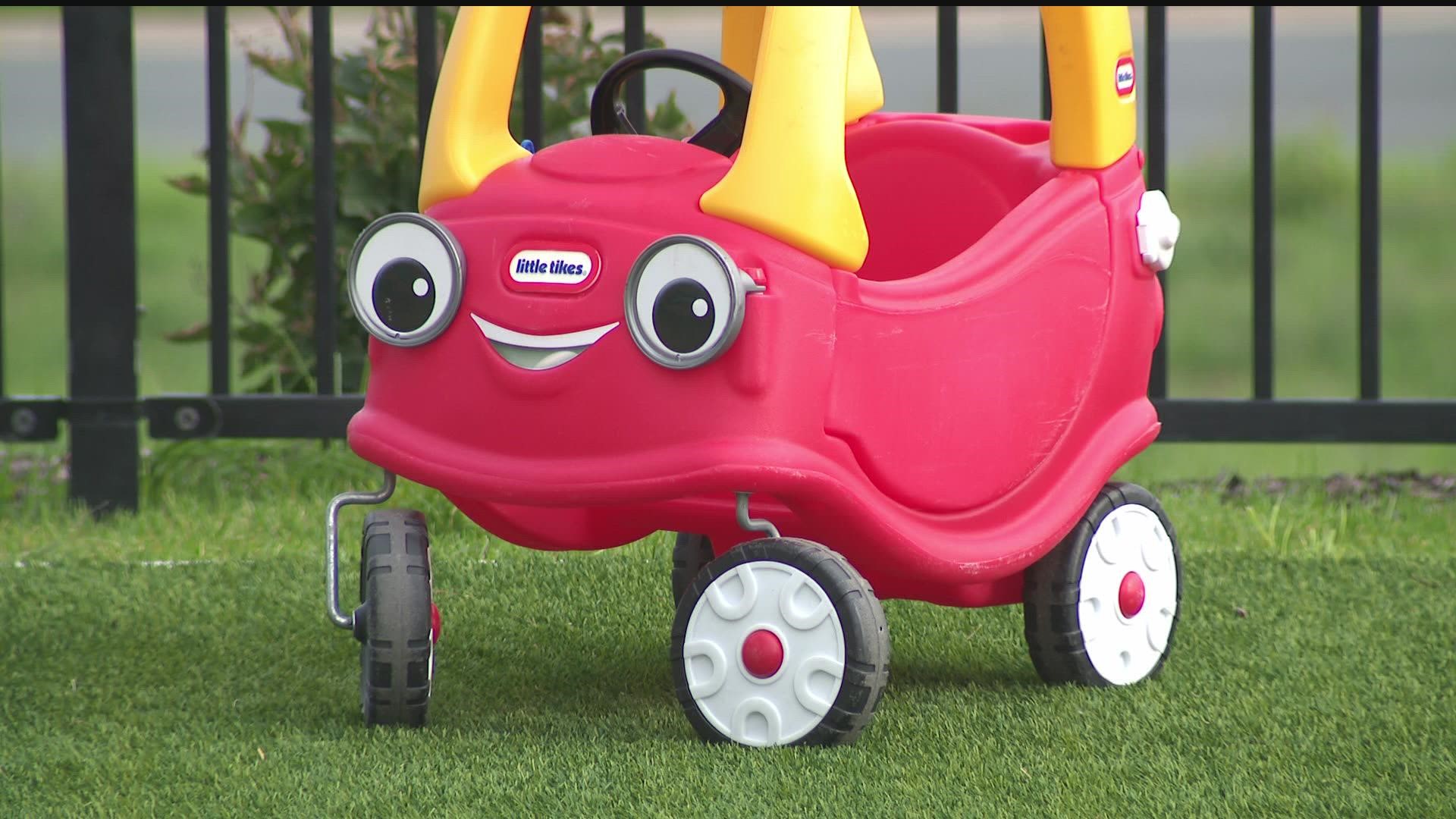MANKATO, Minnesota — A new report from the Center for Rural Policy and Development examines the child care crisis in Greater Minnesota and how different communities are addressing it.
Child care capacity in rural Minnesota has been on a steady trajectory downward since the early 2000s, according to the report.
Family (in-home) child care providers in Greater Minnesota are leaving the field at a faster rate than people entering it; they provide a bulk of child care in rural regions.
"There is no silver bullet to this. No one is going to come along and rescue anybody unless something extremely major happens," said Marnie Werner, vice president of research and operations at the Center.
Kayla Gruber of Little Falls was doing in-home daycare for her first kid when she became pregnant with her second child.
"Our first daycare did not have an infant spot. So we had to decide, do we separate them to different daycares or do we find one that they both can go to? So we actually had to change our whole daycare set-up. We did that for a year and it just wasn't the best fit for us," Gruber said.
Both kids now attend a daycare center in Little Falls.
The state lost in-home child care spaces for 6,500 kids in 2021, according to the Center's report. Unlike urban areas, center-based care is not as available in rural Minnesota.
MORE NEWS: Anonymous donor gives $3 million to help local nonprofit address youth mental health crisis
The report states, "Despite the more favorable economics of family child care for rural areas, Greater Minnesota still has half the family child care capacity it did in 2000, and the precise reason why isn't easy to pin down."
During a virtual panel on Tuesday afternoon, community leaders discussed how the worker shortage has made it hard for the child care industry to compete with rising wages.
"We get people who come in and they're passionate about it and they love it but eventually they leave because there are other options out there that aren't quite as draining," said Karen DeVos, owner of Little Learners Center in Ada.
The report looked at initiatives taking place in communities to address the crisis and found they fell into a few broad groups:
- Direct and indirect financial support to providers
- A growing interest in pods
- Public schools
- Education and outreach
- Employers as providers
For example, Swift County offers a child care grant program to help providers with expenses. Family providers can apply for up to $150 per child enrolled; centers can apply for up to $12,500.
Vanessa Goodthunder, Early Head Start director for the Lower Sioux Indian Community, described something similar, saying, "We were able to get federal dollars to give subgrants to providers in our area and this is if they need fencing to fix to continue with their licensure... or if they need a playground or something to maintain their licensure."
Goodthunder also mentioned incentives for teachers.
The Initiative Foundation in Little Falls has contracted with three community colleges in the region to make it possible for people to get a four-year degree in early child development and education and graduate debt-free. After a student has pursued financial aid packages, the foundation covers the rest.
"The next step is to offer these credentialing pathways in both Spanish and Somali-language programs as well," the report stated.
There is also growing interest in the pod model. It allows multiple providers to operate in the same building as long as their children aren't "co-mingled." It's another option for family child care providers who do not want to operate their business from inside their home.
"Child care in the community, it needs to be addressed as a community," Werner said.
You can read the full report and learn more about what communities are doing to address the shortage, here.
Watch more local news:
Watch the latest local news from the Twin Cities in our YouTube playlist:

